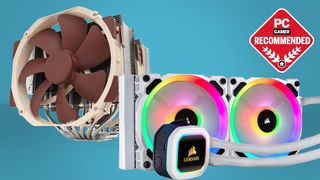Don't panic, but DeepMind has trained an AI to control nuclear fusion
A great source of clean energy gets a little bit easier to control.

Clean energy is set to play a huge part in the direction of future tech. Companies are finally pushing sustainability, be it via repairable laptops, or sneakers with cute snakes on them. But when it comes to the power that sustains the use of basically all the tech you’ll ever come into contact with, we need to be thinking a bit bigger. Nuclear fusion, despite the scary sounding moniker, has the potential to be an excellent source of clean power in the future, and we’re one step closer to being able to easily control it.
Wired reports that the Google backed artificial intelligence firm DeepMind has trained an AI to help control the plasma involved in Nuclear fusion. Nuclear fusion is the fusing of atomic nuclei, which releases huge amounts of energy. It’s what’s going on inside of a star, and despite involving impossibly hot plasma, is earmarked as a good clean source of energy, with fuel being sourced from seawater. It’s still just a matter of controlling it, and thankfully putting that in the hands of an AI isn't anywhere near as terrifying as it sounds. Yet.
Physicists use a device called a tokamak to contain and control these reactions. It’s shaped like a donut, or more scientifically speaking a delicious torus, and uses magnetic coils which can be controlled to help shape and control the plasma. It’s not particularly risky to the scientists involved, but this magnetic field needs to keep the plasma away from the walls inside the tokamak to avoid damaging the device and slowing down the reaction.

Best CPU cooler: keep your chip chilled in style
Best PC fans: super-silent and plastered in RGB
Best PC cases: big, little, and everything in-between.
This process is described a bit similarly to shaping pottery on a wheel, by squeezing in and out different areas of the plasma. However, it requires a lot of engineering work for scientists to do this and see how different shapes and configurations work. This makes it very difficult to test new methods of extracting cleaner, or more power from the process and an AI specifically trained to control the plasma might just be the answer.
Initially DeepMind trained the AI in simulations where it could change the configurations and get computerised feedback on how the plasma should respond. It was also given different shapes to try to make and other tests. Through a deep reinforcement learning system, it was able to autonomously work out how to complete the tests and then replicated the same level of control inside a real tokamak.
One of the hardest parts about controlling the plasma is that it’s ever changing. This presented challenges when training the AI, but ultimately it seems to be working out well. Ambrogio Fasoli, director of the Swiss Plasma Center at École Polytechnique Fédérale de Lausanne in Switzerland said the progress represents a “significant step,” so hopefully it can be upscaled to much larger tokamak and start helping delivering us the clean power we need for the high tech PC gaming of the future.
The biggest gaming news, reviews and hardware deals
Keep up to date with the most important stories and the best deals, as picked by the PC Gamer team.

Hope’s been writing about games for about a decade, starting out way back when on the Australian Nintendo fan site Vooks.net. Since then, she’s talked far too much about games and tech for publications such as Techlife, Byteside, IGN, and GameSpot. Of course there’s also here at PC Gamer, where she gets to indulge her inner hardware nerd with news and reviews. You can usually find Hope fawning over some art, tech, or likely a wonderful combination of them both and where relevant she’ll share them with you here. When she’s not writing about the amazing creations of others, she’s working on what she hopes will one day be her own. You can find her fictional chill out ambient far future sci-fi radio show/album/listening experience podcast right here. No, she’s not kidding.
Most Popular







